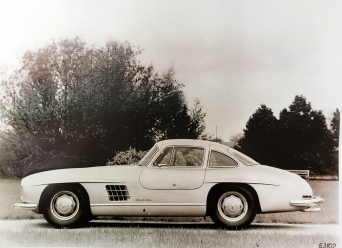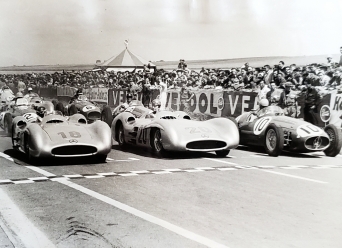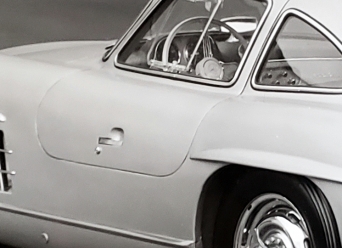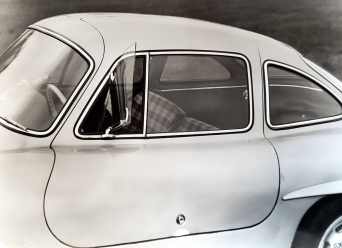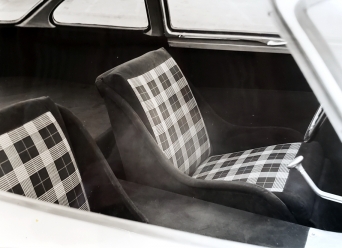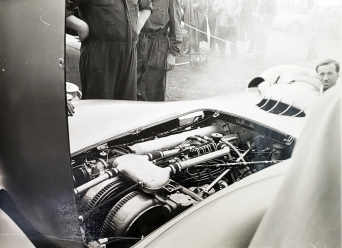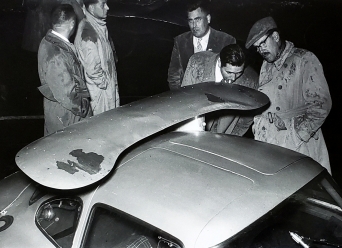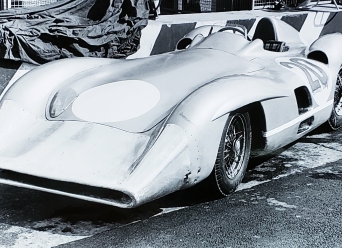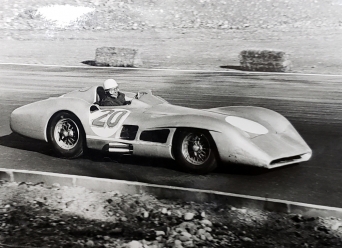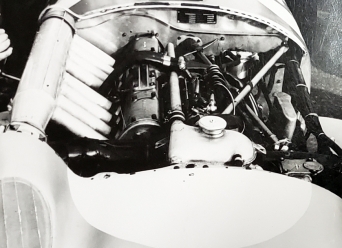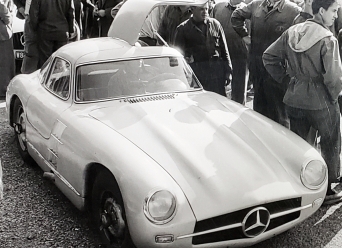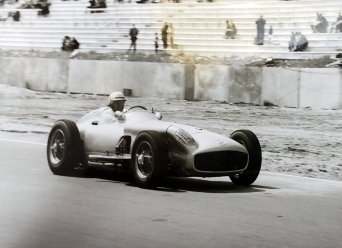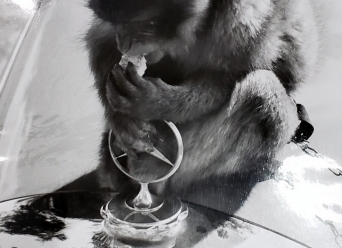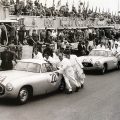As illustrious as the past Mercedes-Benz has is, and as well organized and available as the German juggernaut has remained over the past century through wonderful programs like the Classic Center, there are still many rare bits of its history that even its most ardent followers would be surprised to know were ever a thing.

Over the past 40 years, we’ve been fortunate and diligent enough to have gathered a robust photo archive that can provide rare insight into the history of the iconic happenings surrounding the three pointed star. This is Vol. 1 in our Photo Archive series of posts dedicated to Mercedes-Benz.
Of the thousands of archived original photos in the collection, these are the ones that caught the eye on a particular day of browsing. The following images are original series photographs from our collection, the vast majority of which have hand typed descriptions on the back that were applied shortly after they were developed in period.
NOTE: The full image gallery is at the bottom of this article if you wish for a more comprehensive look at the photos in the collages below.
Peculiar Cylinders
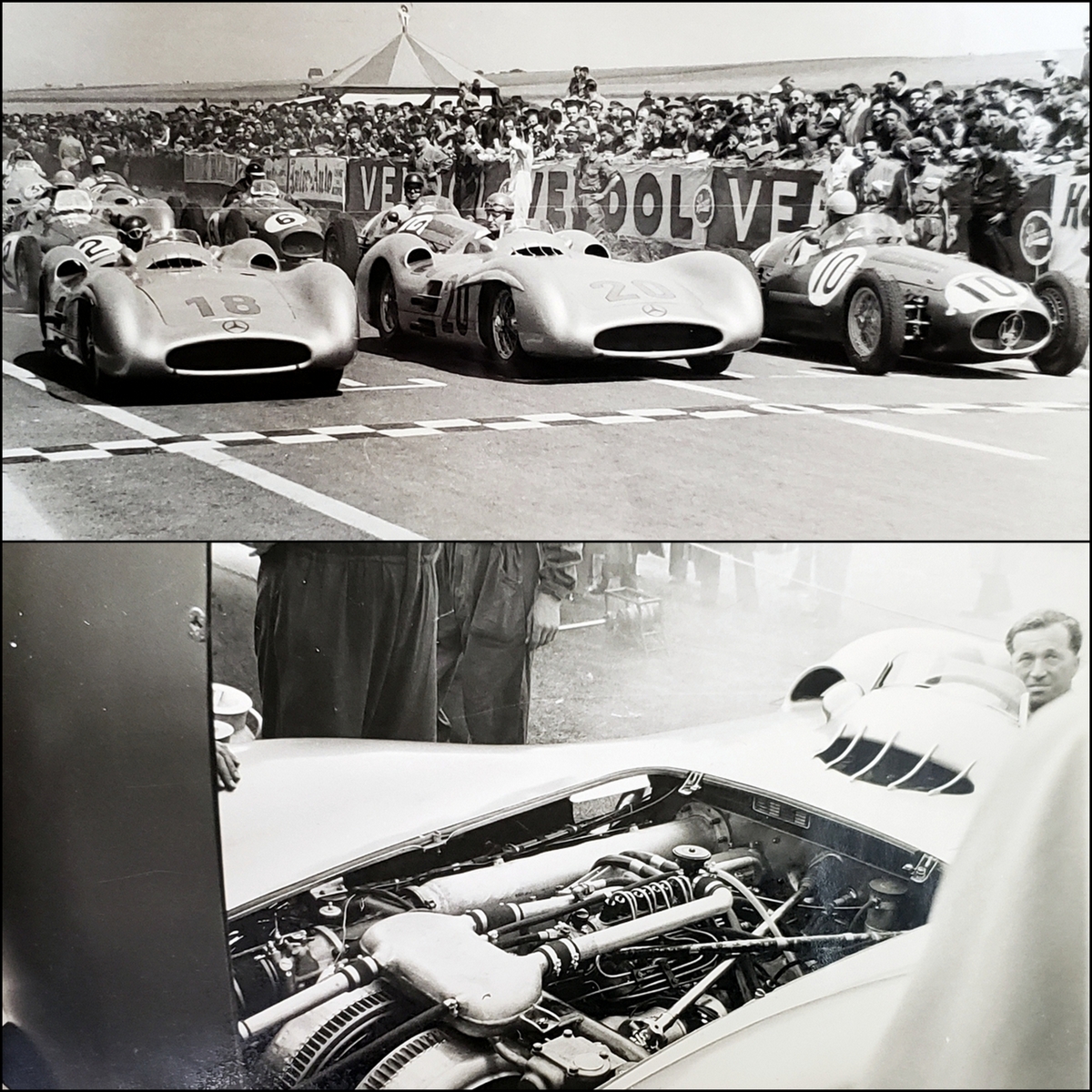
The 1954 Mercedes-Benz Streamliner “Type Monza”. In the image above, what is of interest is those peculiar cylinders at the front of the engine bay. To the uninitiated, perhaps it strikes a cord as some experimental engine enhancement, after all, it’s right there mounted as seemingly part of the powerhouse. As it turns out, to enhance stopping power extra wide diameter drum brakes too large to fit inside the 16″ wheel rims were used, thus they were mounted inboard with short half shafts and two universal joints per wheel.
The Missing Link
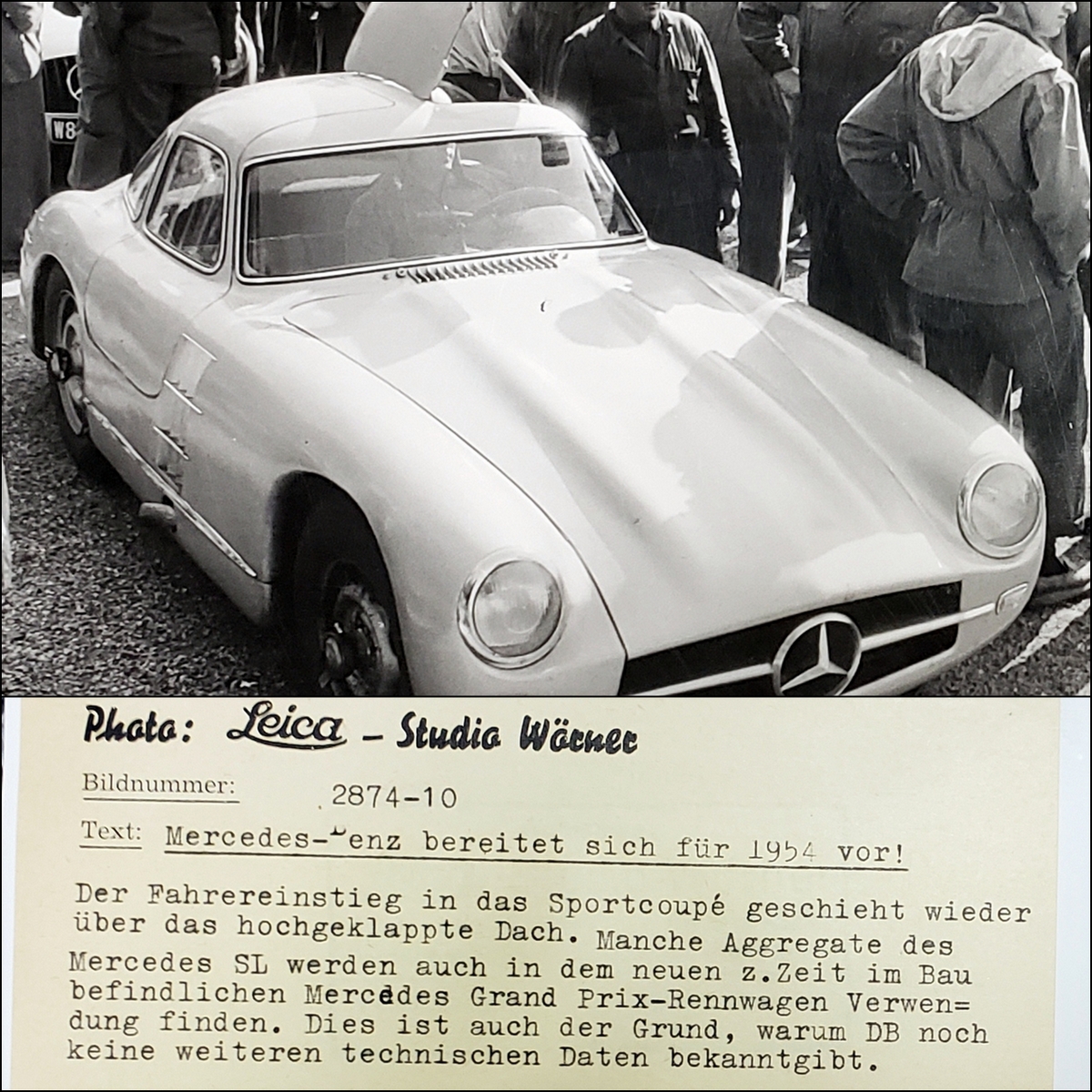
Try to see how many of the differences you can find in the architecture of this early Gullwing prototype with regards to its production brother. Strangely the same as the production cars, and just as strangely different in the execution of the build. Where are the eyebrows? Why the boxy front end? Side exhaust? Open the hood from the front? Strange Louvre location? COPY – Mercedes-Benz is preparing for 1954! The driver entry into the sports coupe arena is again that of the upward lifting doors variety. Some units of the Mercedes SL are also just in time to use as Grand Prix racing cars, but still under construction. This is also the reason why Daimler Benz does not announce any further technical data. END COPY. The photo above is a 1953 “missing link” factory example tying the 1952 race cars to the production Gullwing.
Uhlenhaut’s Riveting Ride
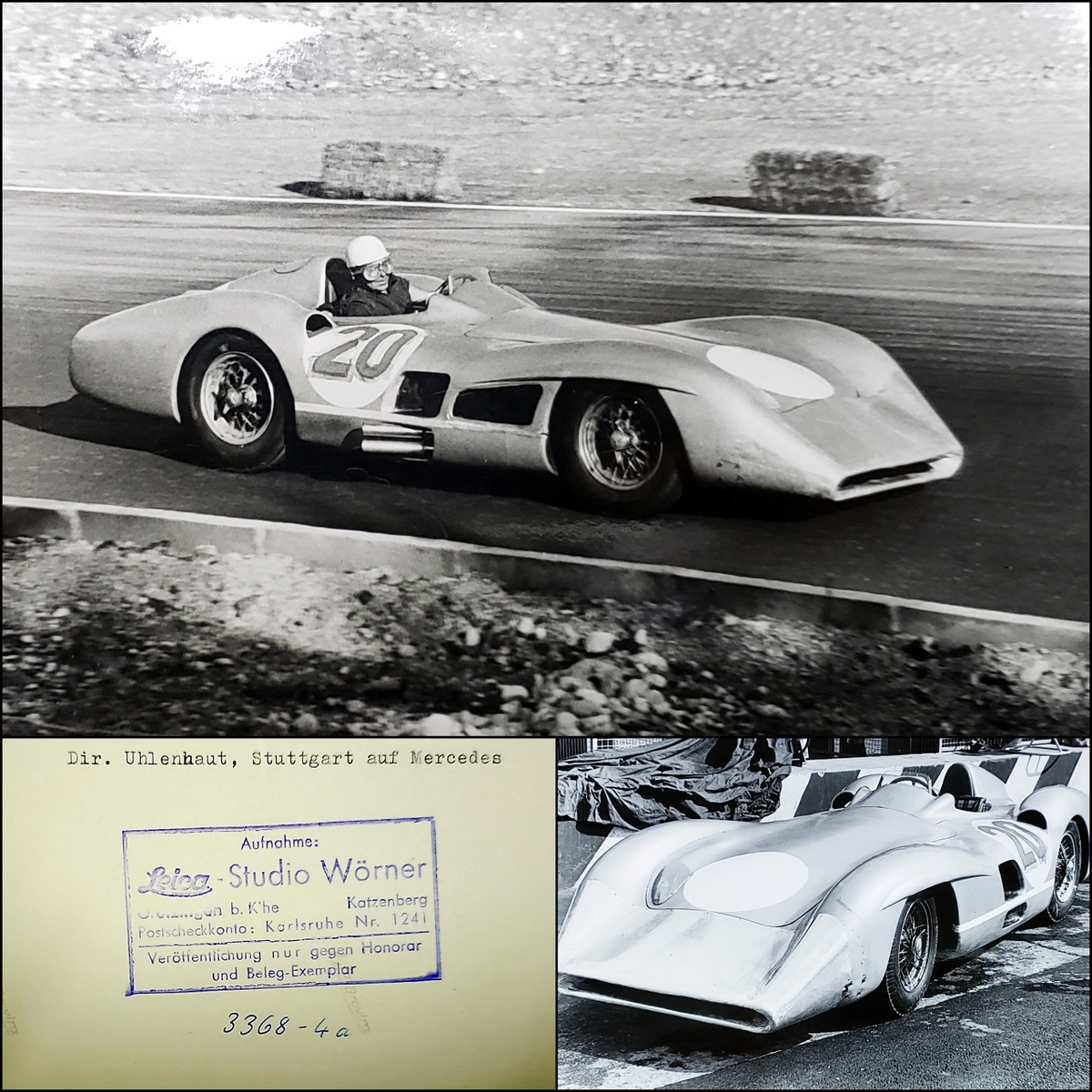
1950’s Mercedes culture was riveted (or welded) with and by innovation as a matter of practice. Theoretical initiatives were often engineered and implemented for real world testing quite crudely, as this experimental front end lends spectacular credence to. Above, Director Rudolf Uhlenhaut drives the modified SLR in Stuttgart. The beauty of the SLR is undeniable and enviable, this facelift was an aesthetic setback from nearly every angle, perhaps we’ll share more deeply on this particular front end modification in the future…for now, enjoy the larger versions for a closer look at the sawed off and replaced front end on the image at bottom right above.
Kurt Wörner Documented The Grand And Mundane
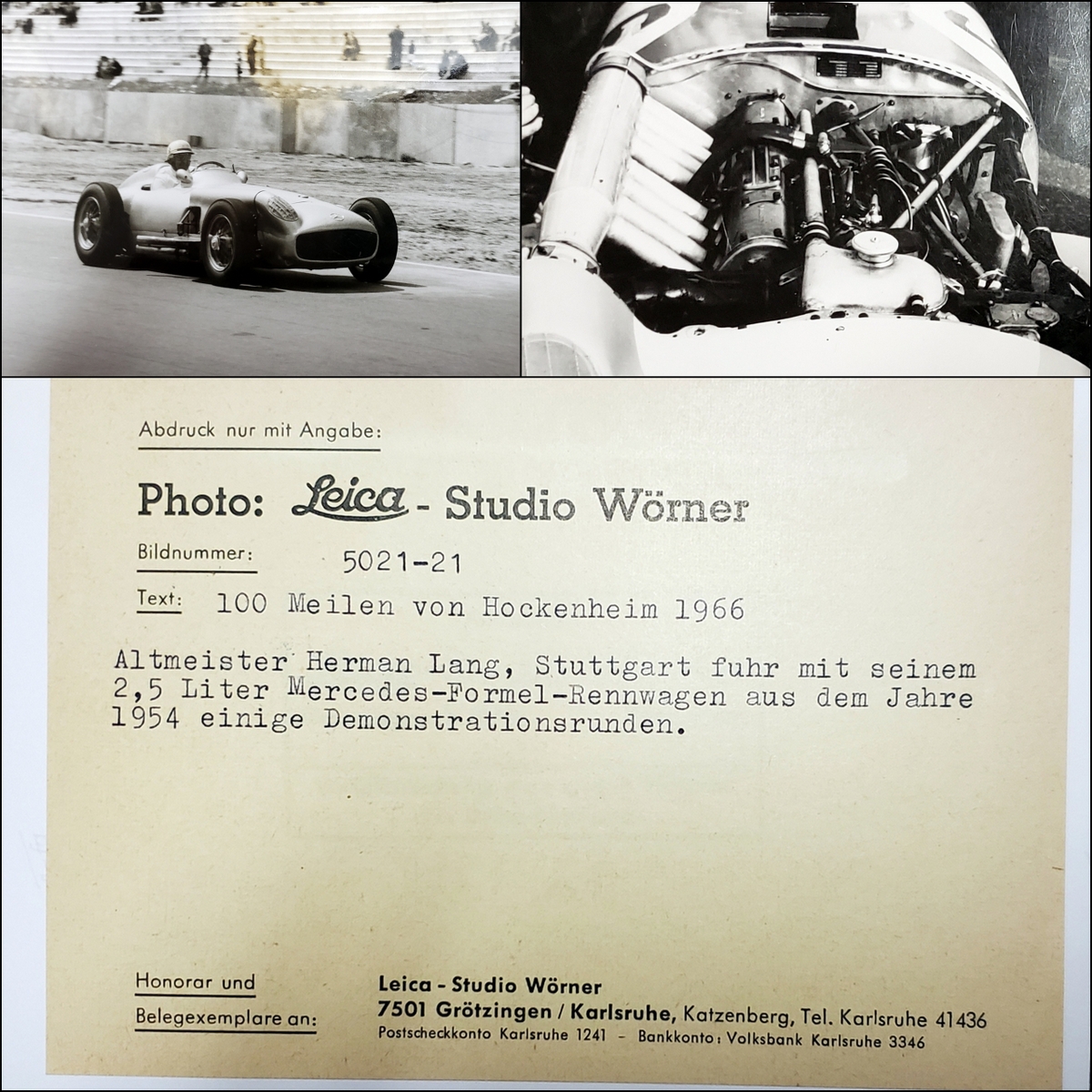
COPY – 100 miles of Hockenheim 1966. Old Master Herman Lang drove a few demonstration rounds with his 2.5-liter Mercedes Formula One racing car from 1954. Top right, close up of the 2.5 liter engine encased in the open wheel competition Mercedes. END COPY Documentation of factory demonstrations probably wasn’t the most entertaining of beats for a racing-centric photographer given the existence of LeMans and The Mille Miglia…but as documented exhaustively in our collected original photo collection, Kurt Wörner was there documenting the golden age of Mercedes and racing proper for the most incredible moments and the most common of mechanical workouts.
Pushing And Pulling
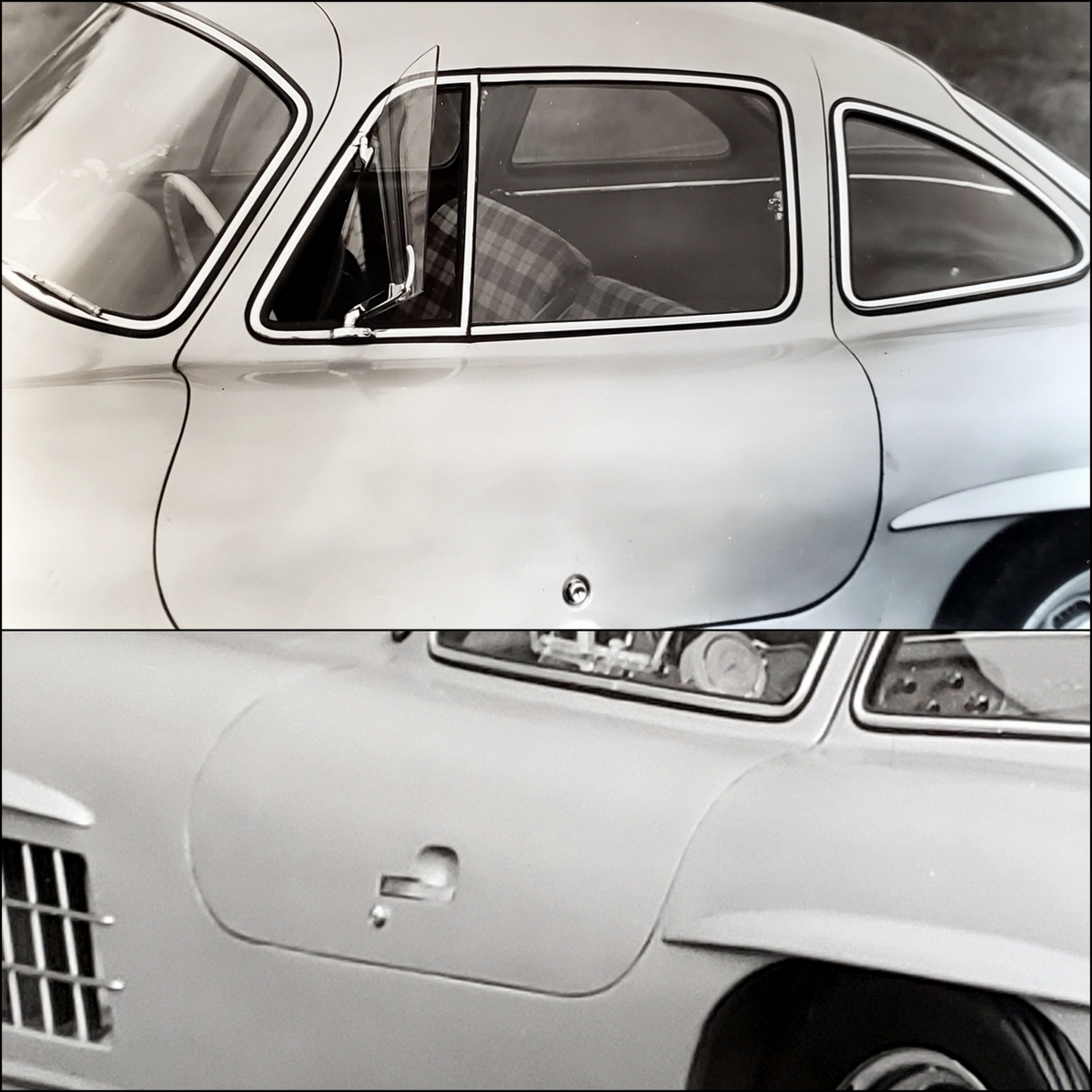
While we were restoring the 1955 Werner Engle World Rally Championship 300SL Coupe, the decision at the crux of the restoration was which one of the several iterations of the car would make the most sense to bring it back to life in. While the ultimate choice was to recreate the car that won the championship, an earlier version of the same chassis had push button doors which can be seen in the top image above. The push button door has an obvious flaw in that for ease of use, when you want to PULL a door open, you’re probably going to want to do more than PUSH…or in this case pull from the open area of the wind wing. At bottom above, another less streamlined design of the eventual production car’s door opening system with an opening scooped out for easy access to grabbing the handle. In this system, thumb hits the bottom, four digits do the pulling.
Spartan Beginnings And Breaking Spoilers
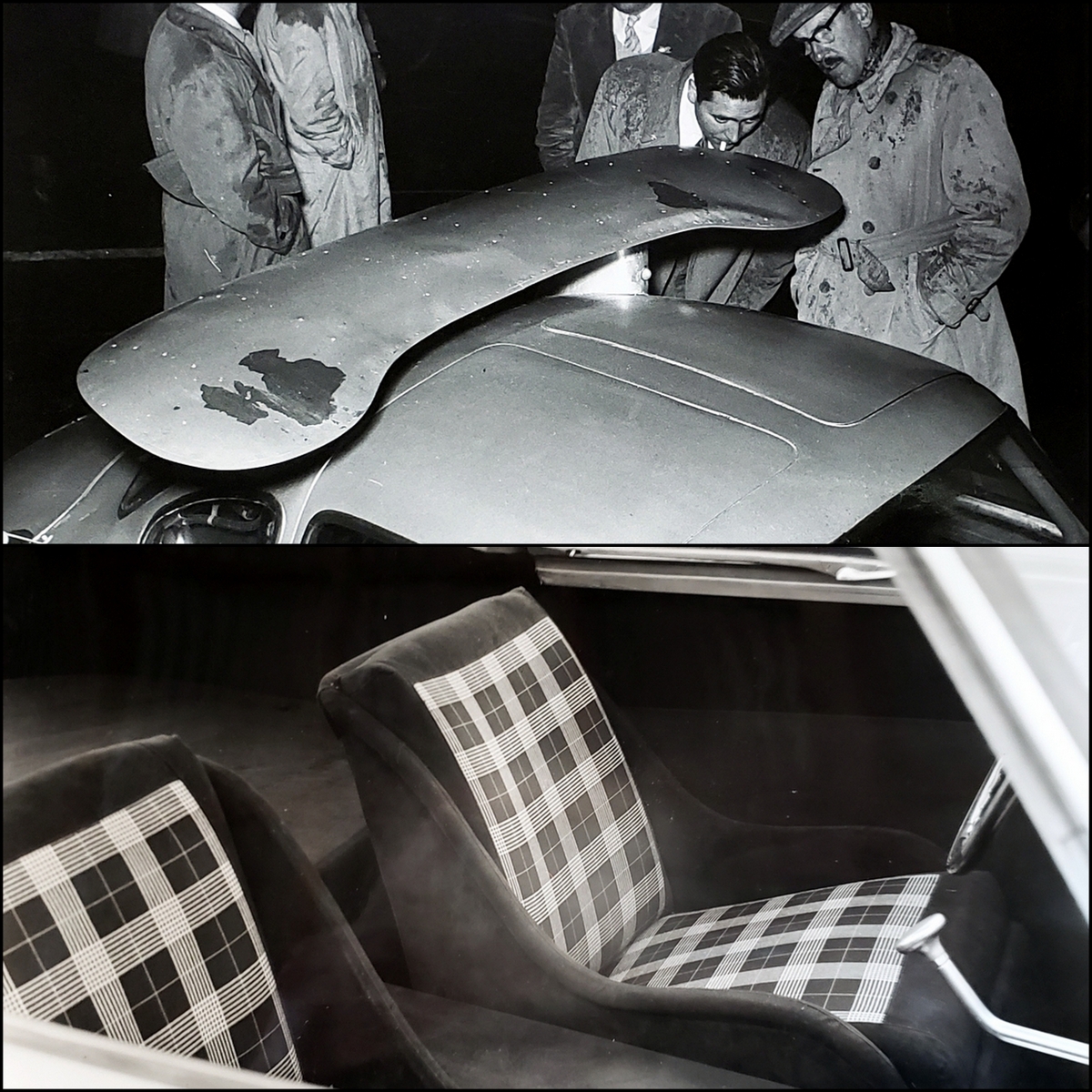
Top image above: Mercedes, back at it trying to get a leg up on the competition, toyed with a top mounted breaking system designed specifically for the W194 chassis and it’s use at LeMans, controlled by the man in the cockpit. The idea was to keep the top brake horizontal during the then uninterrupted four kilometer Mulsanne Straight and increase its verticality for additional braking. While it never made it on to the track at LeMans and no explanation was ever given as to why, the answers are probably obvious for even the most uninclined of engineering minds among us. The horizontal position did nothing to increase speed and the vertical position, while quite affective in raw breaking power, must have caused incredible havoc in maneuvering if used in the turns, which truth be told it was never intended to be used as such. Also of note regarding the braking “spoiler”, Mercedes found that the implement functioned quite well, however it would begin to dislodge structurally after several uses at high speeds…in other words, it was simply not robust enough for multiple uses. Last, as a matter of intimidation, Mercedes brought this car and its odd spoiler out in its parade of cars to intimidate and render the competition uneasy through innovation, perceived if not fully realized. Above Bottom: You’ll never look at a plaid fabric Gullwing interior the same again. Spartan is only the half of it, it almost appears as if the simplistic interior for this truly proto-300SL interior was crafted out of velour or some version of something akin to the modern alcantara interiors that have flooded the supercar market. The long gooseneck shifter can clearly be seen coming from beneath the dash.
The Lighter Side
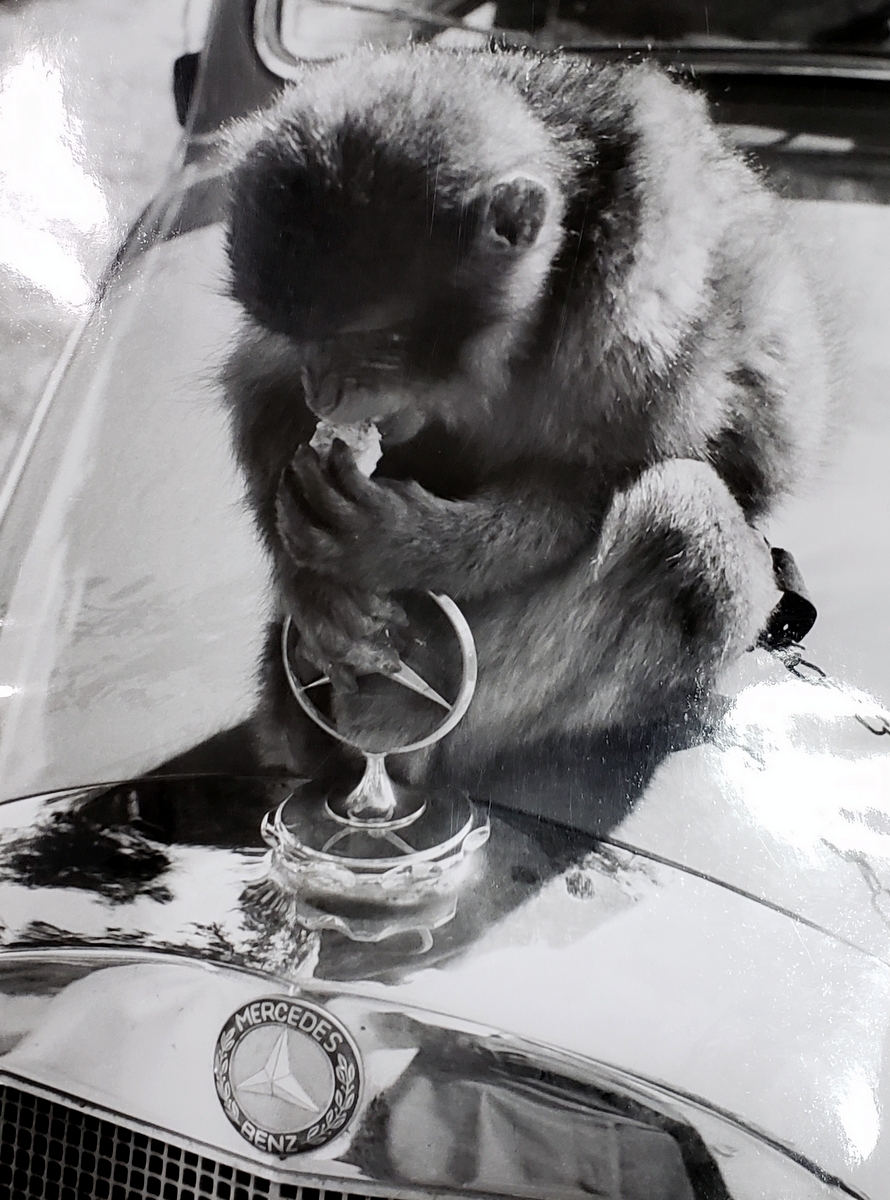
For many reading this, car collecting straddles the line between business and pleasure. With all high dollar figures surrounding the hobby of classic cars today, let us not so quickly forget that the lighter side of things, the fun and enjoyment in cars, does in fact exist. The photo above is anonymous, at least to our knowledge. If anyone has any information regarding its origins, we’re all ears.
